Best Asian Alcoholic Beverage Types
Umeshu is a Japanese liqueur made by macerating sugar and ume plums (Prunus mume) in alcohol. It is usually made with rock sugar and ripe or green ume plums, while the base is generally made with shōchū, though other neutral spirits can also be used.
The result is a bittersweet liqueur with a fruity aroma. Apart from the classic version, umeshu comes in a variety of styles that may include other sweeteners such as honey or black sugar, while some add additional flavorings. Umeshu can be enjoyed straight, on the rocks, or diluted with water, tea, or soda.
VARIATIONS OF Umeshu
THE BEST Umeshu Fruit Liqueurs
Junmai is a type of sake made with rice that is polished with 70% of the grain remaining. The requirements specify that the only ingredients used to produce junmai include rice, koji, yeast, and water, while no other additions, such as alcohol or sugar, are allowed.
This sake is usually slightly heavier and full-bodied, with a more earthy character than its fruity and floral counterparts, but remaining light and refreshing. It is an easy-drinking sake that can be a good match to slightly heavier dishes. Junmai can be served chilled or warm.
MAIN INGREDIENTS
A simple highball cocktail made with gin and tonic water poured over ice, then garnished with a lime wheel is called Gin and Tonic. In the early 19th century, the cocktail was introduced to India by British officers. Malaria was a persistent problem in India, so the officers used the cocktail to prevent and treat the disease with the tonic's quinine.
Due to its bitterness and sour notes, this cocktail is hugely popular worldwide, especially during the summer months. One can experiment with ratios of the components, even though suggested ratios of gin to tonic water range between 1:1 and 1:3. In some countries, it is commonly referred to as Gin Tonic, while people in English-speaking countries often simply call it G & T.
Öküzgözü is a native Turkish red grape with excellent potential. It hails from Elazığ province, though it is widely planted in other wine-growing regions. The grape is often made into a varietal, but it is also commonly blended with native Boğazkere.
The latter will add more body and tannins to the blends. Öküzgözü produces ruby red wines with fruity aromas reminiscent of raspberries and cherries. They usually display some herbal nuances, and oak-aged styles will typically have jammy notes reminiscent of ripe fruit, leather, and spices.
Japanese single malt, blended malt, and blended whiskies were inspired and modeled on Scottish tradition. They are double distilled from malted barley, which is occasionally peated (dried over smoked peat) and fermented grains. The spirit is then aged in oak casks, which may include American or Scottish oak, old Sherry casks, or Japanese Mizunara oak.
The official production of Japanese whiskey started in 1923 when the first distillery was opened in Yamazaki (Kyoto). The distillery was a joint effort of Shinjiro Torii and Masataka Taketsuru, who eventually went to found his own Nikka distillery on Hokkaido.
THE BEST Japanese Whisky Spirits



Akkeshi
Akkeshi Taisetsu Single Malt Japanese Whisky
ISC-International Spirits Challenge - Gold 2024


Wakatsuru Shuzo Co. Ltd.
SABUROMARUⅡ The high priestess Cask strength
ISC-International Spirits Challenge - Gold 2023
Kalecik Karası is a native Turkish grape that probably originated in Kalecik district of Central Anatolia. The grape is not well-known outside Turkey, but it is slowly gaining international recognition. It is considered one of the finest Turkish grapes.
Kalecik Karası produces light to medium-bodied wines, often described as a cross between Pinot Noir and Gamay. They are typically cherry-colored with a fruity aroma reminiscent of red berries. On the palate, they are smooth and velvety, with good acidity and soft tannins.
Papazkarası or Papaskara is a Turkish grape cultivated in Marmara and Central Anatolia regions. The grape produces juicy red wines that are intensely colored and usually have high alcohol content and good acidity. The aromas are subtle and reminiscent of red and dark berries, with hints of pepper and spices.
The wines are versatile, and though they are commonly enjoyed young, some are also suitable for oak-aging. They are fruity and food-friendly, making excellent pairing with chicken, pork, lamb, and vegetables. It is suggested that the grape might have Greek origins, where it is still sometimes cultivated under the name Kara Papas.
Believed to have been the first distilled beverage in Japan, awamori is almost exclusively associated with Okinawa. The drink is distilled from fermented long-grained rice and black koji mold, which is usually referenced as the key ingredient that gives awamori its distinctive flavor.
The drink improves and mellows with age and is typically stored in clay pots and allowed to mature. It is the most common drink on Okinawa that is usually served alongside water and ice, allowing each person to mix and adjust it according to their taste.
MAIN INGREDIENTS
Chūhai is a mixed Japanese drink with fairly low alcohol content. In its original form, it was made with soda water and shōchū—Japanese spirit distilled from various ingredients such as barley, sweet potatoes, rice, or buckwheat.
Nowadays, shōchū is sometimes replaced with vodka, and the combinations usually include various types of fruit-flavored soda water, fruit juices, or syrups. The name chūhai originated as a portmanteau of the words shōchū and highball, and it is believed that the drink first appeared in izakayas in Tokyo.
Daiginjo is a sake variety made with polished rice, water, koji mold, and yeast. It is one of the pure sake varieties in which the rice is polished until at least 50% of the outer layer of the grain is removed. This refined premium sake is typically light, smooth, and incredibly fragrant, and its finesse and mellow flavors are best appreciated when it is served chilled.
It is typically paired with simple and light dishes, and it is often enjoyed as an aperitif or a digestif. Daiginjo sake can be adjusted with the addition of distilled brewer’s alcohol, while the category Junmai Daiginjo does not include any additives.
THE BEST Daiginjo Alcoholic Beverages
Best Asian Alcoholic Beverage Producers
Iichiko is a renowned Japanese producer of shochu, a traditional Japanese spirit made from various ingredients like barley, sweet potatoes, and rice. Founded by Sanwa Shurui, Iichiko is famous for its commitment to high-quality production and innovation.
Headquartered in the Oita Prefecture of Kyushu, Japan, an area known for its clean water and natural beauty, Iichiko has become a global leader in the shochu industry. Iichiko's most notable products include its flagship barley-based shochu, iichiko Saiten, which is crafted using unique methods such as the "all Koji" fermentation technique.
AWARDS
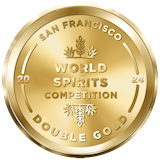
SFWSC - San Francisco World Spirits Competition - Double Gold
2024, 2023

ISC-International Spirits Challenge - Double Gold
2022

IWSC- International wine & spirit competition - Spirit Gold
2024
BEST Iichiko Spirits
Kavalan is a renowned Taiwanese whisky brand, celebrated for its single malts produced in Yilan County. Established by King Car Group, Kavalan leverages Taiwan’s subtropical climate to mature its whisky faster, creating rich and complex flavors. The brand has earned global acclaim, winning numerous awards for its innovation and craftsmanship, especially for expressions aged in various casks like sherry, port, and wine.
Kavalan’s unique process and commitment to quality make it a standout in the world of whisky.
AWARDS

SFWSC - San Francisco World Spirits Competition - Double Gold
2024, 2023

ISC-International Spirits Challenge - Double Gold
2024

World Whisky - Double Gold
2020
AWARDS

SFWSC - San Francisco World Spirits Competition - Double Gold
2024, 2023

ISC-International Spirits Challenge - Double Gold
2022, 2021

IWSC- International wine & spirit competition - Spirit Gold
2024, 2021, 2020
BEST Hombo Shuzo Liqueurs
AWARDS

SFWSC - San Francisco World Spirits Competition - Double Gold
2024, 2023

IWSC- International wine & spirit competition - Spirit Gold
2024, 2023, 2022, 2021, 2020
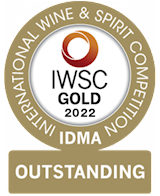
IWSC- International wine & spirit competition - Spirit Gold Outstanding
2024, 2023, 2022, 2021
BEST Zhangshu Ganjiang Brewery Spirits
AWARDS
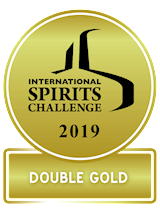
ISC-International Spirits Challenge - Double Gold
2020, 2019
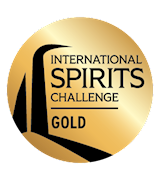
ISC-International Spirits Challenge - Gold
2024
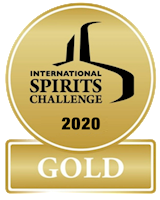
ISC-International Spirits Challenge - Gold trophy
2020
AWARDS

SFWSC - San Francisco World Spirits Competition - Double Gold
2024

USC- Ultimate Spirits Challenge - Chairman's Trophy
2023, 2022, 2020
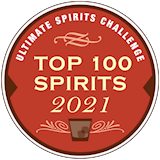
USC- Ultimate Spirits Challenge - Top 100
2023, 2021, 2020
AWARDS
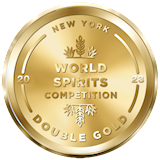
NYWSC - New York World Spirits Competition - Double Gold
2023

SFWSC - San Francisco World Spirits Competition - Double Gold
2023
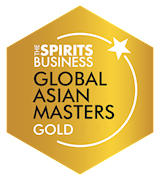
The Asian Spirits Masters - Gold
2022
BEST The Kyoto Distillery Spirits
AWARDS

ISC-International Spirits Challenge - Double Gold
2024
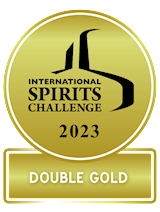
ISC-International Spirits Challenge - Double Gold
2023, 2022, 2021, 2019

IWSC- International wine & spirit competition - Spirit Gold
2024
BEST Suntory Liquors Limited Spirits
Changyu is the oldest Chinese producer of wine and brandy, founded in 1892 in Yantai, Shandong Province, by Zhang Bishi, a patriotic Chinese expatriate. By introducing 124 noble grape varieties from Europe and building the first underground wine cellar in Asia, Changyu laid the foundation for modern winemaking in China.
Koya is a brand of brandy produced by Changyu, utilizing traditional French Charentais copper pot stills for distillation. The distillery owns six of these stills, making it one of the wineries with the highest number of Charentais stills in the world.
AWARDS

IWSC- International wine & spirit competition - Spirit Gold
2023
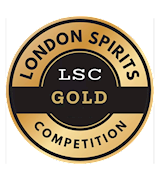
London Spirits Competition - Gold
2024
BEST Chateau Koya Spirits
AWARDS

SFWSC - San Francisco World Spirits Competition - Double Gold
2024, 2023

IWSC- International wine & spirit competition - Spirit Gold
2024

IWSC- International wine & spirit competition - Spirit Gold Outstanding
2024, 2022, 2021
BEST Luzhou Liangduoduo Liquor Spirits
Best Asian Alcoholic Beverages
AWARDS

SFWSC - San Francisco World Spirits Competition - Double Gold
2023

USC- Ultimate Spirits Challenge - Chairman's Trophy
2023, 2022, 2020

USC- Ultimate Spirits Challenge - Top 100
2023, 2022, 2020
AWARDS

SFWSC - San Francisco World Spirits Competition - Double Gold
2024, 2023
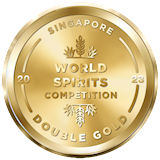
SWSC - Singapore World Spirits Competition - Double Gold
2023
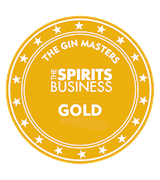
The Gin Masters - Gold
2022
Iichiko Saiten is a premium barley shochu with an ABV of 43%. It's known for its smooth, clean flavor profile, which is the result of a meticulous single-distillation process. The spirit is crafted using barley koji, allowing it to retain a rich depth of flavor while maintaining a crisp, refreshing finish.
This high-quality product is popular both in Japan and internationally, especially in cocktail culture.
AWARDS

SFWSC - San Francisco World Spirits Competition - Double Gold
2024, 2023

ISC-International Spirits Challenge - Double Gold
2022
AWARDS

SFWSC - San Francisco World Spirits Competition - Double Gold
2023

World Whisky - Double Gold
2020

ISC-International Spirits Challenge - Gold
2024
AWARDS
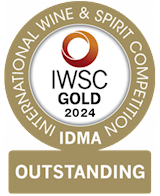
IWSC- International wine & spirit competition - Spirit Gold Outstanding
2024

ISC-International Spirits Challenge - Gold
2024
AWARDS

IWSC- International wine & spirit competition - Spirit Gold Outstanding
2024

ISC-International Spirits Challenge - Gold
2024
AWARDS

SFWSC - San Francisco World Spirits Competition - Double Gold
2024, 2023
AWARDS
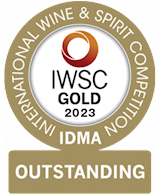
IWSC- International wine & spirit competition - Spirit Gold Outstanding
2023

IWSC- International wine & spirit competition - Gin Gold Trophy
2023
AWARDS

IWSC- International wine & spirit competition - Spirit Gold Outstanding
2023

IWSC- International wine & spirit competition - Baijiu Gold Trophy
2023
AWARDS

SFWSC - San Francisco World Spirits Competition - Double Gold
2024
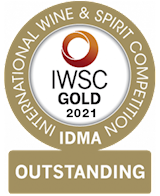
IWSC- International wine & spirit competition - Spirit Gold Outstanding
2021


TasteAtlas food rankings are based on the ratings of the TasteAtlas audience, with a series of mechanisms that recognize real users and that ignore bot, nationalist or local patriotic ratings, and give additional value to the ratings of users that the system recognizes as knowledgeable. For the “Top 100 Asian Alcoholic Beverages” list until March 24, 2025, 2,032 ratings were recorded, of which 1,360 were recognized by the system as legitimate. TasteAtlas Rankings should not be seen as the final global conclusion about food. Their purpose is to promote excellent local foods, instill pride in traditional dishes, and arouse curiosity about dishes you haven’t tried.





























































































































































































